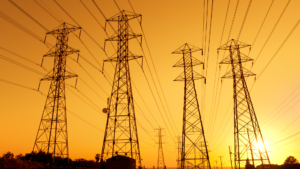 Switching electricity providers lets homeowners take advantage of competitive pricing. America began deregulating its electricity markets in the late 1990s. And while deregulation has not been embraced everywhere, 29 states allow competition from independent energy suppliers, including New York, New Jersey, Pennsylvania, and Maryland.
Switching electricity providers lets homeowners take advantage of competitive pricing. America began deregulating its electricity markets in the late 1990s. And while deregulation has not been embraced everywhere, 29 states allow competition from independent energy suppliers, including New York, New Jersey, Pennsylvania, and Maryland.
Producers, Utilities, and Suppliers
Most people assume one company is responsible for generating and delivering their electricity. However, this is not always the case. In a deregulated market, producers own the power plants. Utilities own the lines that transport electricity to your home, while suppliers buy electricity from producers and sell it to consumers, with utilities as their middlemen.
In regulated markets, utilities act as suppliers and consumers have no choice but to buy from them. But in deregulated markets, suppliers can intervene to lower costs. They shop around for the cheapest producer, then contract with utilities to deliver power.
Why Switch Electricity Providers
Switching lelectricity providers is seamless. There’s no danger of losing power during the transition, even momentarily. So, if you have access to an alternate supplier, here are the reasons to consider switching.
- Predictable Monthly Costs. If you buy electricity directly from a utility, costs will fluctuate month to month, according to market rates. Homeowners benefit when prices fall, but a sudden rise can wreck their monthly budget. Switching to a supplier allows you to lock in a fixed rate that makes it easy to predict energy costs over the long term.
- Save Money. Because suppliers buy electricity from multiple producers, they can provide it at the lowest possible cost. If you’re unhappy with your electricity bill, switching electricity providers is a simple way to save money.
- Better Customer Service. If your current provider does not respond to complaints quickly or adequately, switching suppliers is the best solution.
- Reduce Carbon Footprint. Suppliers have broad access to green energy producers. Many homeowners worried about their effect on the environment have found that switching to a new supplier lets them power their home with fewer fossil fuels.
Brownouts and blackouts are another reason homeowners switch providers. However, these are not the fault of the supplier, but producers and utilities. Either they cannot generate enough electricity for your area or there is a problem with the grid, such as downed power lines. Either way, changing suppliers is rarely the solution.
Before Switching Electricity Providers
Homeowners who are uncertain whether switching electricity providers is the right choice, should take some time to research the problem and the options available in their area. To determine whether switching will help, start by analyzing your current costs.
Is your bill high because of the rates you’re paying your supplier or your utility? You’ll see them broken out in your power bill. It’s exceedingly rare to have more than one utility in a region, so utility costs are non negotiable.
If it’s a supply issue, check the rates and plans offered by other local suppliers. What’s their price per kilowatt? What’s their contract length? Do they provide any special discounts (nights and weekends, etc.)? What are their peak hours? Each of these will have a big impact on the amount you pay each month.
How to Switch
Switching electricity providers is simple. Contact your new supplier, provide your location, get an account number, and confirm your switch date. If they have auto-pay, they may ask for a credit card number as well. The process normally takes only a few minutes.
In some cases, your new supplier will contact your old supplier and tell them when to stop service. Otherwise, you’ll have to call and inform them. Make sure you have your switch date handy.
Most suppliers have a penalty fee if you terminate service early, so if you can, switch after your contract expires. However, suppliers normally offer better deals when demand is low. Energy use falls during spring and autumn, when fewer people are running their furnace and air conditioner. To attract customers during these periods, suppliers either lower their rates or offer discounts.
Benefits of Switching to Agway
Agway draws on multiple producers to deliver electricity at the lowest cost. But besides saving money on your energy bill, every customer who signs with us is automatically enrolled in our EnergyGuardTM program. Rather than pay out of pocket to repair faulty equipment (furnaces, air conditioners, electrical lines), our customers call us. We schedule the repair and cover the costs of parts and labor. Sign up today and save!